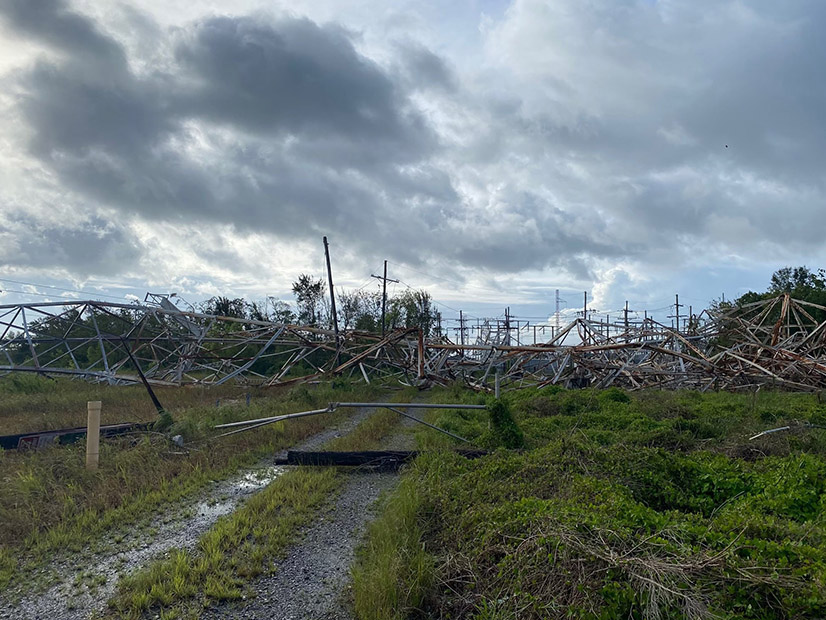FERC last week authorized Entergy Louisiana and Entergy New Orleans to assume more than $15 billion in debt and securities to help recover losses incurred from Hurricane Ida’s destruction (ES22-7, ES22-8).
The orders allow Entergy Louisiana to issue up to $13 billion in long-term debt, $450 million in short-term debt and $300 million in preferred securities. Entergy New Orleans can issue up to $1.24 billion in long-term debt, $150 million in short-term debt and $40 million in preferred securities.
FERC said the long-term interest rate cannot exceed 6.775% and the short-term interest cannot exceed 4.5%.
Additionally, the Entergy subsidiaries can also issue $170 million and $25 million in letters of credit to post collateral and secure their participation in MISO’s markets.
Entergy said the late August hurricane inflicted anywhere from $2-$2.4 billion worth of damage to its Louisiana utility arm and $120-$130 million in damages to its New Orleans affiliate. The repair costs caused the utilities to surpass their debt ceilings ahead of their mid-July 2022 conclusion.
Entergy affiliates usually simultaneously file requests with FERC to issue debt, making the out-of-cycle requests unusual.
The new debt authorizations went into effect Dec. 1 and end Oct. 13, 2023.
Entergy reported damage to approximately 500 transmission structures, more than 225 substations, more than 210 transmission lines and nearly 6,000 transformers. Repairs to 30,500 distribution poles and nearly 36,500 spans of distribution wire were also necessary, the company said.
The staggering restoration costs led two commissioners to issue a warning of the increased financial damage related to climate change that ratepayers will bear.
FERC Chair Richard Glick and Commissioner Allison Clements wrote a separate concurrence urging their fellow commissioners to consider transmission investment as a means to hedge increasingly steep repair estimates.
Glick and Clements said while they agreed with Entergy’s need to issue debt and securities, they were writing “to underscore that this is another clear example of the deep costs of climate change and extreme weather, which will ultimately be borne by customers.”
The two pointed out that according to Entergy, the costs inflicted by Hurricane Ida were more than the combined costs of Hurricanes Katrina, Ike, Delta and Zeta.
“Hurricane Ida is just one of 18 climate-related disaster events with losses exceeding $1 billion that has affected the United States this year,” Glick and Clements wrote. “We expect that restoration costs following climate-induced extreme weather events will continue to grow, and for that reason, the commission should consider how prudent investments in transmission system planning can ultimately save customers money.”
Entergy Louisiana CEO Phillip May has rejected the idea that a more resilient transmission system could have withstood Ida’s ravages any better than the existing grid. (See Entergy Fends Off Calls for Tx, Solar, Microgrid Investment.)



